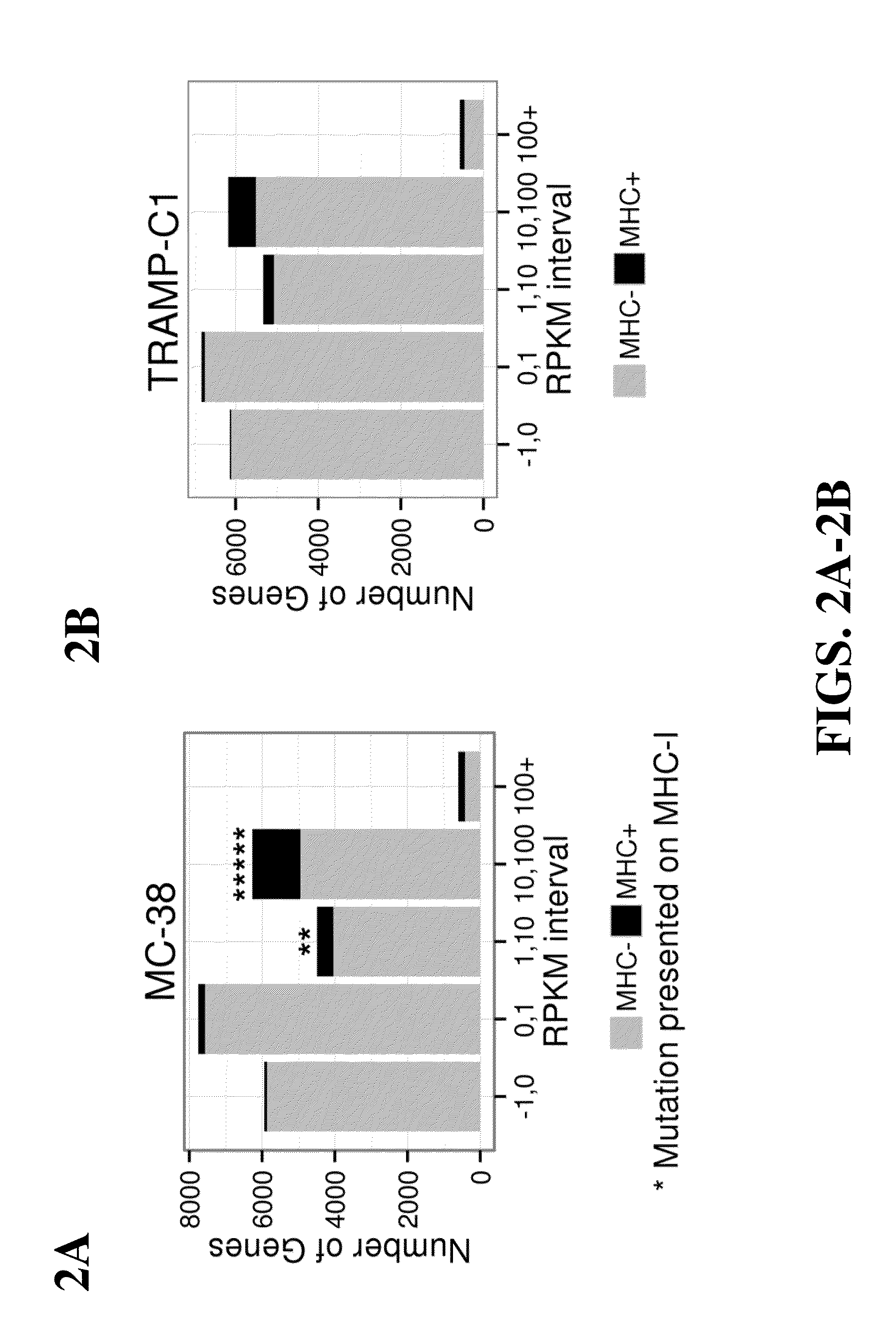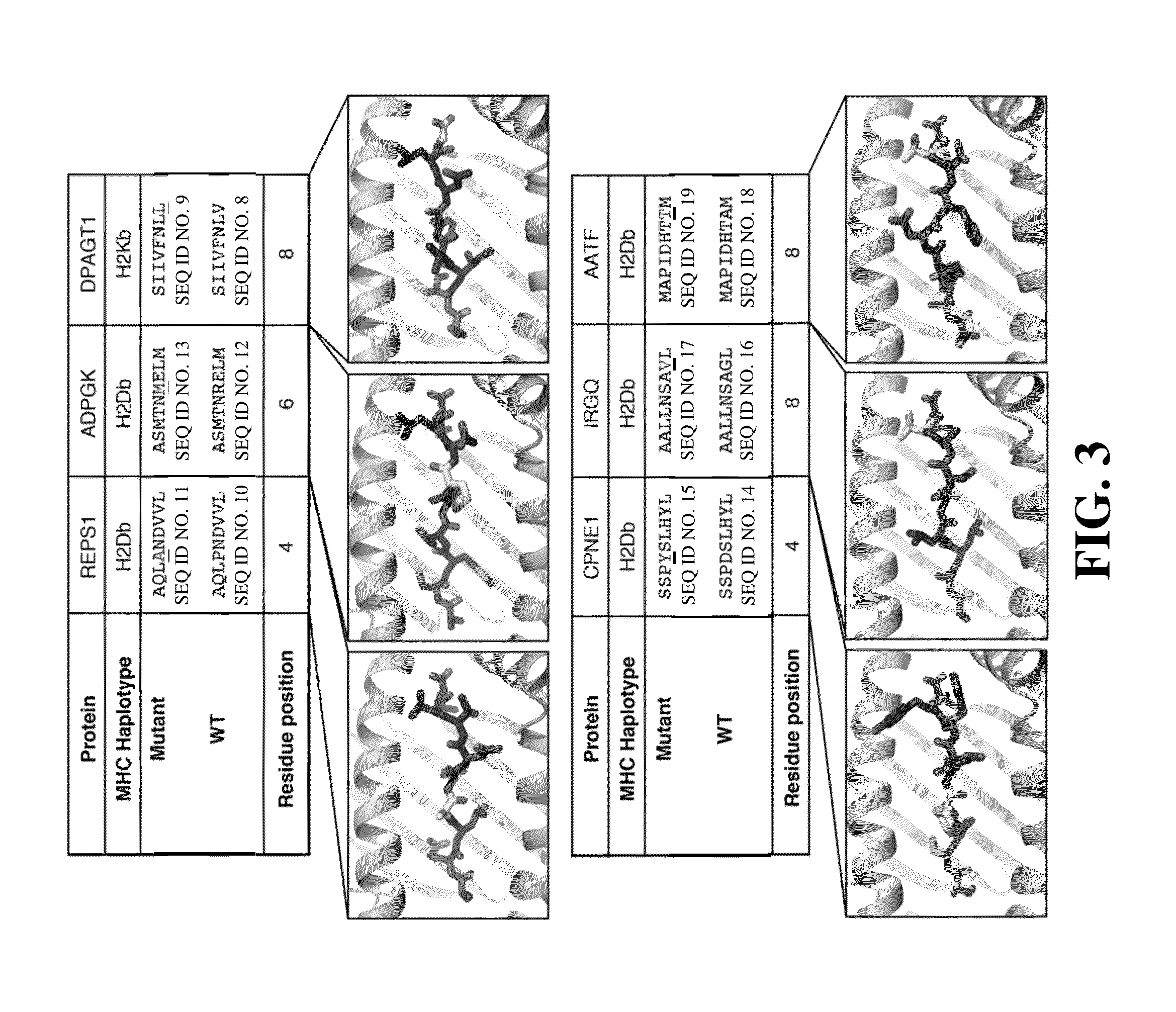Immunogenic mutant peptide screening platform
- Summary
- Abstract
- Description
- Claims
- Application Information
AI Technical Summary
Benefits of technology
Problems solved by technology
Method used
Image
Examples
example 1
[0141]This example demonstrates an exemplary methodology for prediction of immunogenic peptide epitopes.
[0142]Whole-exome sequencing was performed on MC-38 and TRAMP-C1 mouse tumor cell lines to identify tumor-specific point mutations. Coding variants were called relative to the reference mouse genome to identify 4285 and 949 non-synonymous variants in MC-38 and TRAMP-C1, respectively. Subsequently, the data were filtered for gene expression by RNA-Seq analysis and revealed that 1290 and 67 mutated genes were expressed in MC-38 and TRAMP-C1, respectively. 170 predicted neoepitopes in MC-38 and 6 predicted neoepitopes in TRAMP-C1 tumors were identified using the NETMHC-3.4 algorithm.
[0143]Next, mass spectrometric analysis using a transcriptome-generated FASTA database revealed 797 unique H-2Kb epitopes and 725 unique H-2Db epitopes presented by the MC-38 cell line, and 477 unique H-2Kb epitopes and 332 unique H-2Db epitopes presented by the TRAMP-C1 cell line. It was observed that pe...
PUM
| Property | Measurement | Unit |
|---|---|---|
| Immunogenicity | aaaaa | aaaaa |
Abstract
Description
Claims
Application Information
 Login to View More
Login to View More - R&D Engineer
- R&D Manager
- IP Professional
- Industry Leading Data Capabilities
- Powerful AI technology
- Patent DNA Extraction
Browse by: Latest US Patents, China's latest patents, Technical Efficacy Thesaurus, Application Domain, Technology Topic, Popular Technical Reports.
© 2024 PatSnap. All rights reserved.Legal|Privacy policy|Modern Slavery Act Transparency Statement|Sitemap|About US| Contact US: help@patsnap.com










